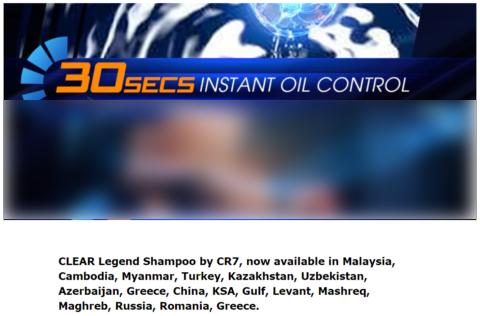Influencer marketing is big business. But how do you know whether your campaigns are delivering results?
Like all forms of digital, influencer marketing must be measurable and have a demonstrable ROI to work as a viable marketing tactic.
Some influencer marketing gurus challenge the very idea of measuring ROI as antiquated, similar to asking the ROI of having telephones in the office.
But influencer marketing won’t be taken seriously by Chief Financial Officers (CFOs) as long as Chief Marketing Officers (CMOs) dodge the question.
In this column, you’ll learn about the challenges in calculating influencer marketing ROI, as well as a formula for calculating Return on Marketing Investment (ROMI). Let’s get started.
Calculating Returns on Influencer Marketing Can Be Tricky Business
Spending on influencer marketing in the U.S. will increase 33.6% from $2.76 billion in 2020 to $3.69 billion in 2021.
And 67.9% of US marketers will use influencer marketing this year, up from 62.3% last year.
The demand for the top celebrities and influencers is so great that global brand Clear paid Cristiano Ronaldo, one of the most popular football (AKA, soccer) players in the world, an estimated $619,497 to $1 million for a single Instagram post.
With so much money getting poured into reaching Ronaldo’s 339 million Instagram followers, you can bet dollars to donuts that someone at Clear is going to ask, “What’s the ROI of our latest influencer marketing campaign?”
That’s a great question – and it’s one that all of us need to know how to answer.
But, few topics generate as many deer-in-the-headlights looks from marketers as ROI. It’s hard to know what to measure and it’s tricky to tie influencer marketing efforts directly to business results.
The first thing you need to know is ROI is the wrong metric.
Why?
Because it measures money that is “tied up” in plants and inventories (which are capital expenditures or CAPEX).
The right metric to use is Return on Marketing Investment (ROMI).
Why?
Because it measures money spent on marketing, which is typically expensed in the current period (which are operational expenditures or OPEX).
And here’s how to calculate ROMI:
[Incremental Revenue Attributable to Marketing ($) * Contribution Margin (%) – Marketing Spending ($)] / Marketing Spending ($) = ROMI
So, let’s say Ronaldo’s #sponsored Instagram post cost $1 million, just so we can use a round number.
And, let’s say that the contribution margin on Clear shampoo is 60%, which is just a completely unscientific, wild-assed guess.
If Ronaldo’s post generates $5 million in incremental revenue, then you multiply that by 60% to get $3 million in gross profit.
Then, you subtract the $1 million spent on influencer marketing and then divide the $2 million result by the $1 million spent on influencer marketing to get a ROMI of 2.
Like this:
[$5,000,000 * 60% – $1,000,000] / $1,000,000 = 2
In other words, every dollar spent on influencer marketing generated an additional $2 on Clear’s bottom line.
Get it?
Got it?
Good.
Now, how can you be sure that you can attribute $5 million in incremental revenue to Ronaldo’s post?
Tips for Tracking Influencer Marketing Results
Well, one way is to use the free Campaign URL Builder tool, which allows you to easily add campaign parameters to URLs so you can measure Custom Campaigns in Google Analytics.
 Screenshot from Clearhaircare.com, September 2021
Screenshot from Clearhaircare.com, September 2021Create a Trackable URL
All you need to do is:
- Enter the URL of the landing page.
- Enter a term like “Instagram” in the box for the campaign source.
- Enter another term like “influencer” in the box for campaign medium.
- And enter a term like “Ronaldo” in the box for the campaign name.
The Campaign URL Builder tool will generate a campaign URL for you – and you can even use bitly to shorten the URL.
Then, all Ronaldo needs to do is use this URL in his post and the marketers at Clear can track the results in Google Analytics.
Tracking Influencer Marketing Campaign Performance Using Incremental Revenue
Another way to track results is to leverage the fact that Ronaldo is promoting the new CLEAR Men Legend Shampoo by CR7, which has a design, scent, and texture personally selected by Cristiano Ronaldo, who wears the number 7 on his jersey.
In addition, CLEAR Legend Shampoo by CR7 is now available at leading drug stores and supermarkets in Malaysia, Cambodia, Myanmar, Turkey, Kazakhstan, Uzbekistan, Azerbaijan, Greece, China, KSA, Gulf, Levant, Mashreq, Maghreb, Russia, Romania, and Greece.
All the marketers at Clear need to do is track incremental revenue from this sub-brand and compare that to revenue from their other shampoo products — or from Thailand, Italy, and Portugal, where CLEAR Legend Shampoo by CR7 isn’t available yet.
 Screenshot from Clearhaircare.com, September 2021
Screenshot from Clearhaircare.com, September 2021Smaller Influencers May Give You an Even Better ROMI
Marketers may not want to bet their jobs on the possibility that a celebrity or mega-influencer with more than 1 million followers can generate $5 million in incremental revenue with a single post.
Well, they will be relieved then to discover that smaller influencers will probably give them an even better ROMI. This could include:
- Microinfluencers with less than 15,000 followers.
- Regular influencers with between 15,000 and 50,000 followers.
- Rising influencers with between 50,000 and 100,000 followers.
Instagrammers will get paid different amounts of money depending on how many followers they have, the engagement rates they get, and the categories of content that they create.
For example, Instagram influencers with less than 15,000 followers might make around $100 per post, while those with between 50,000 and 100,000 followers might make $200 per post on average, although it depends on the profile.
However, the calculation for your return on investment in influencer marketing remains the same.
So, let’s say a microinfluencer’s #sponsored Instagram post costs $100.
And, let’s say that the contribution margin on your brand is 60%, which is as good a guess as I can make without knowing more about your product category.
If the microinfluencer’s post generates $1,000 in incremental revenue, then you multiply that by 60% to get $600 in gross profit. Then, you subtract the $100 spent on influencer marketing and then divide the $500 result by the $100 spent on influencer marketing to get a ROMI of 5.
In other words, every dollar spent on influencer marketing would have generated an additional $5 for your bottom line.
Now, generating $1,000 in incremental revenue isn’t going to get you a promotion. But let’s say you identified 10 micro-influencers and were able to generate $10,000 in incremental revenue.
Do you see where this is headed?
The biggest challenge to this strategy, of course, is finding 10 appropriate influencers to participate in your campaign.
There are now 1,360 influencer marketing-focused platforms and agencies, 240 more than a year ago. So this is a relatively easy problem to solve.
Or, let’s say you find 10 rising influencers and pay each one $200 for a total of $2,000. If their posts generate $25,000 in incremental revenue, and your contribution margin is still 60%, then you get $15,000 in gross profit.
Then you subtract the $2,000 that you spent on the influencer marketing campaign and then divide the $13,000 result by the $2,000 spent on influencer marketing.
What do you get? A ROMI of 6.5.
In other words, every dollar spent on this influencer marketing campaign would have generated an additional $6.50 for your bottom line.
That’s the answer that you want to give when your CFO asks, “What’s the ROI of our latest influencer marketing campaign?”
More Resources:
- How to Measure the ROI of Your Social Media Marketing Efforts
- Digital Marketing ROI: 11 Metrics You Must Understand
- Social Media Marketing: A Complete Strategy Guide
Featured image: CoCoArt_Ua/Shutterstock





